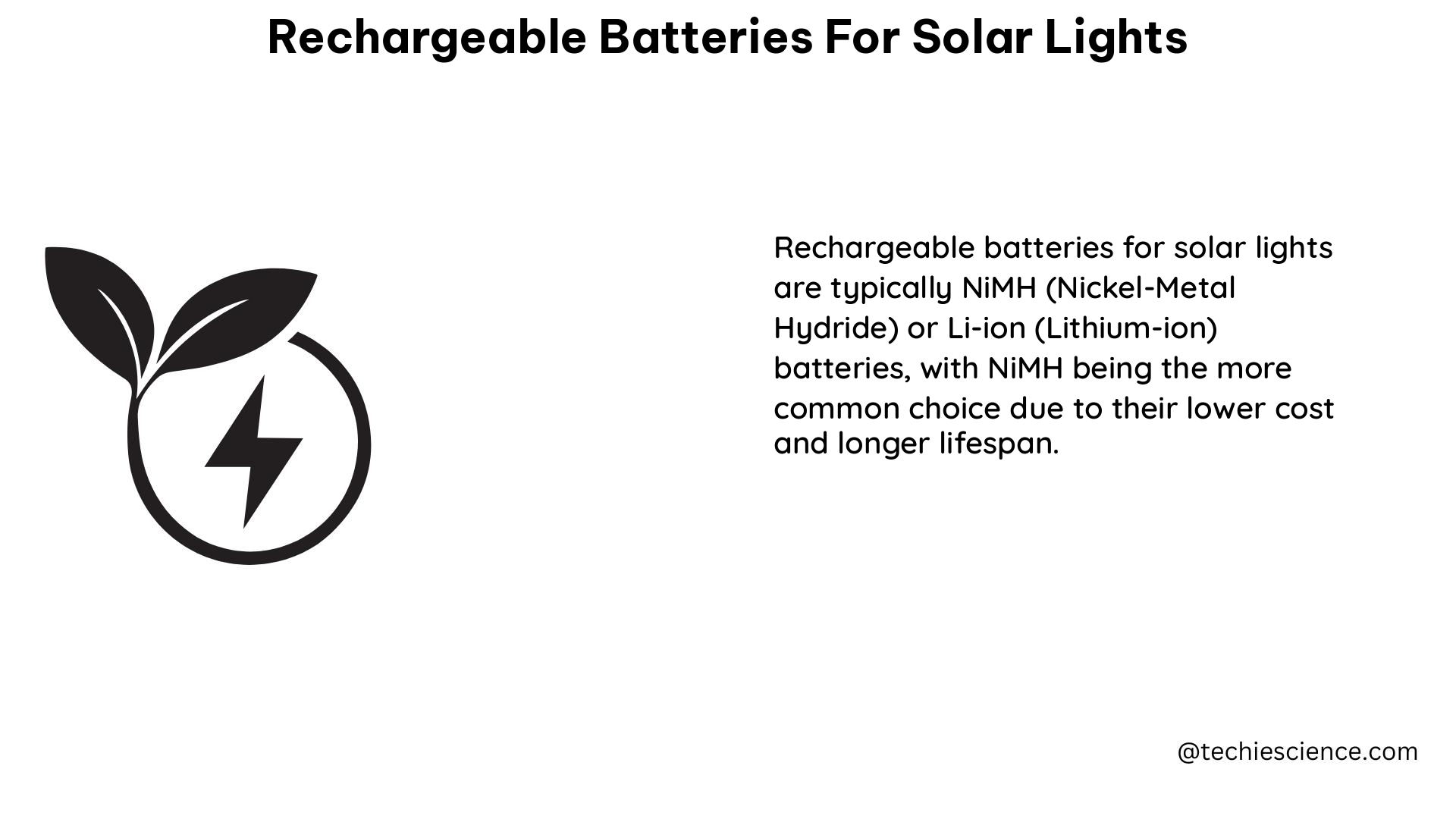Rechargeable batteries are the backbone of solar-powered lighting systems, providing the necessary energy storage to illuminate outdoor spaces even when the sun is not shining. Understanding the technical aspects of these batteries is crucial for ensuring optimal performance and longevity of your solar lights. In this comprehensive guide, we will delve into the intricate details of rechargeable batteries, exploring their capacity, Peukert’s law, and voltage compatibility, among other key factors.
Battery Capacity: The Lifeblood of Solar Lights
The capacity of rechargeable batteries, measured in Coulombs (C), is a critical parameter that determines the runtime and overall performance of solar lights. This capacity is influenced by several factors, including the discharge current density, temperature, and the number of charge-discharge cycles.
Peukert’s law, an empirical formula, quantifies the relationship between the discharge current density and the capacity of lead-acid batteries. According to this law, as the discharge current density increases, the capacity of the battery decreases. For instance, a lead-acid battery with a capacity of 1000 Coulombs at a discharge current density of 1 Ampere would have a capacity of approximately 600 Coulombs when discharged at a current density of 10 Amperes, assuming a Peukert constant (n) of 1.3.
The Peukert constant (n) is a dimensionless parameter that reflects the rate of capacity fade with increasing discharge current density. The lower the Peukert constant, the better the battery’s performance at high discharge rates. For example, a battery with a Peukert constant of 1.2 would retain more of its capacity at a discharge current density of 10 Amperes compared to a battery with a Peukert constant of 1.3.
Battery Chemistry: Choosing the Right Type

In the context of solar lights, different battery chemistries offer unique advantages and disadvantages. Nickel-Metal Hydride (NiMH) batteries are a popular choice due to their lower self-discharge rate and reduced susceptibility to the memory effect compared to Nickel-Cadmium (NiCd) batteries. However, NiMH batteries may have a shorter lifespan when charged slowly using a charging system designed for NiCd batteries.
Lithium-ion (Li-ion) batteries are another option for solar lights, offering higher energy density and longer cycle life compared to lead-acid and NiMH batteries. However, Li-ion batteries require more sophisticated charging and protection circuits to ensure safe operation, which can increase the overall cost of the solar lighting system.
Voltage Compatibility: Ensuring a Seamless Connection
When using rechargeable batteries in solar lights, it is crucial to consider the voltage compatibility between the battery and the solar lighting system. Regular alkaline rechargeable batteries, for instance, may not provide the required voltage and can lead to permanent damage to the solar unit.
Most solar lights are designed to operate with 1.2V NiMH or 3.7V Li-ion batteries. Attempting to use batteries with different voltage ratings can result in suboptimal performance, reduced runtime, or even complete failure of the solar lighting system.
Capacity Retention and Cycle Life
The capacity retention and cycle life of rechargeable batteries are also important factors to consider when selecting batteries for solar lights. Capacity retention refers to the battery’s ability to maintain its initial capacity over time, while cycle life represents the number of charge-discharge cycles the battery can withstand before its performance degrades significantly.
Lead-acid batteries typically have a lower capacity retention and cycle life compared to NiMH and Li-ion batteries. NiMH batteries can maintain up to 70-80% of their initial capacity after 500-1000 cycles, while Li-ion batteries can retain 80-90% of their capacity after 500-2000 cycles, depending on the specific chemistry and manufacturing process.
Charging and Maintenance Considerations
Proper charging and maintenance of rechargeable batteries are essential for maximizing their performance and lifespan in solar lighting applications. Overcharging, undercharging, or using incompatible chargers can all contribute to premature battery degradation.
Solar lights often come equipped with dedicated charging circuits that are designed to work with the specific battery chemistry used in the system. It is recommended to use the manufacturer-recommended chargers and follow the charging guidelines to ensure the batteries are charged safely and efficiently.
Conclusion
Rechargeable batteries are the heart of solar lighting systems, and understanding their technical aspects is crucial for ensuring optimal performance and longevity. By considering factors such as capacity, Peukert’s law, battery chemistry, voltage compatibility, capacity retention, and charging requirements, you can make informed decisions when selecting and maintaining rechargeable batteries for your solar lights. This comprehensive guide has provided you with the necessary knowledge to navigate the world of rechargeable batteries and enjoy the benefits of sustainable, off-grid lighting solutions.
References:
– Farschad Torabi, Pouria Ahmadi, in Simulation of Battery Systems, 2020
– Reddit post: Can I put a non-rechargeable battery in a solar light?
– Sustainability Stack Exchange post: Can I use Ni-MH batteries in my garden solar lights?
– Tapetum blog post: What Happens If You Put Regular Batteries in Solar Lights?
– Rapport Inc. article: Can You Use Regular Rechargeable Batteries for Solar Lights?

The lambdageeks.com Core SME Team is a group of experienced subject matter experts from diverse scientific and technical fields including Physics, Chemistry, Technology,Electronics & Electrical Engineering, Automotive, Mechanical Engineering. Our team collaborates to create high-quality, well-researched articles on a wide range of science and technology topics for the lambdageeks.com website.
All Our Senior SME are having more than 7 Years of experience in the respective fields . They are either Working Industry Professionals or assocaited With different Universities. Refer Our Authors Page to get to know About our Core SMEs.